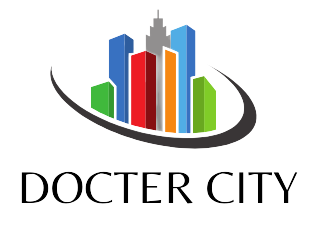Are Boobs Fat or Muscle – In the intricate dance of human biology, few features court as much attention and carry as much mystery as breasts. Shrouded in societal symbolism and anatomical wonder, breasts (or boobs, as they are colloquially known) have sparked questions about their composition. Are they made up of fat? Do they contain muscle? In this expansive exploration, we’ll shed light on this topic and provide a comprehensive understanding of breast anatomy.
As we navigate this subject, we recognize its sensitivity and the varying degrees of personal connection our readers may have with it. Therefore, it’s paramount to approach the matter accurately and respectfully and promote body positivity. Let us embark on this educational journey into the composition of breasts, aiming to dispel common misconceptions and bring forth science-backed insights.
Understanding Breast Composition
Breasts are fascinating structures composed of several types of tissues, each playing a distinct role in their function and appearance. To grasp their complexity, we must familiarize ourselves with the nuances of breast anatomy.
An average adult breast comprises primarily glandular tissue, adipose (fat), and connective tissue. The glandular tissue is responsible for milk production and delivery, and it is organized into lobes and lobules connected by ducts. Surrounding this epithelial component is the adipose tissue, which accounts for the size and fullness of the breast. Meanwhile, connective tissue and ligaments provide support, shaping the breast and maintaining its position on the chest wall.
The Role of Fat in Breast Size
Understanding that fat is a significant component in a breast’s volume, it becomes clear that body fat percentage and distribution variations can influence breast size. Gender, genetics, diet, lifestyle, and overall body composition play pivotal roles in determining where and how fat is stored in an individual’s body—inevitably impacting the breasts.
Hormones, particularly estrogen, also strongly influence fat deposition, engaging in a delicate balancing act throughout different life stages, including puberty, menstruation cycles, pregnancy, and menopause.
The Role of Muscle in Breast Shape
Now, let’s address the muscle aspect of the equation. Beneath the breast tissue lies the pectoralis major—a prominent chest muscle that extends across the upper chest. While breasts do not contain muscle tissue, the pectoralis significantly influences the underlying foundation upon which the breast tissue sits.
Engaging in exercises that strengthen the chest muscles can result in a firmer and more toned appearance of the overall chest area. However, it is essential to recognize that such exercises do not directly enhance breast tissue but rather improve the chest muscle contour and how the breasts may appear on the body.
Other Factors Affecting Breast Appearance
It’s equally as important to consider other contributing factors to breast appearance. Hormonal fluctuations can temporarily affect breast size and tenderness. Age, too, plays a crucial role, as the composition of breasts changes over time, often leading to increased sagging due to a reduction in epithelial tissue density and elasticity within the supporting structures.
Moreover, genetics dictate predispositions to various breast sizes, shapes, and densities—factors entirely out of one’s control yet crucial in understanding one’s unique anatomy.
Common Misconceptions
Over the years, several myths have formed around the idea that breasts are simply collections of fat or that they can be toned and enlarged like muscles through specific exercises. While it’s established that fat and the pectoral muscles impact the appearance of breasts to some extent, it’s scientifically inaccurate to view them as entities made solely of either. Debunking such myths is critical as we cultivate a more scientifically grounded and compassionate view of our bodies.
Conclusion
Recognizing the intricate tapestry that constitutes breast anatomy underscores the beauty and complexity of the human form. It emphasizes that our bodies are more than the sum of their parts—they are living, breathing repositories of individual stories, genetics, and physiological marvels. As we reflect on the key points discussed, let us appreciate our bodies’ diverse expressions and functions, advocating a message of body positivity and self-acceptance.
We invite you to spread awareness by sharing this post with those you think could benefit from this knowledge. If you have thoughts or questions about the topic, we encourage you to leave a comment below. Your perspectives contribute significantly to this ongoing conversation. For more enlightening posts on similar issues, don’t hesitate to subscribe to our blog. Lastly, follow us on social media to keep abreast of new blog posts and enriching discussions.
Together, let us cultivate a community of learning, understanding, and self-love.
3 Key Takeaways:
- Breasts comprise glandular, adipose (fat), and connective tissues.
- Body fat and hormones influence breast size, while pectoral muscles underlie breast shape.
- Genetics, age, and hormonal shifts are significant factors in breast appearance.

